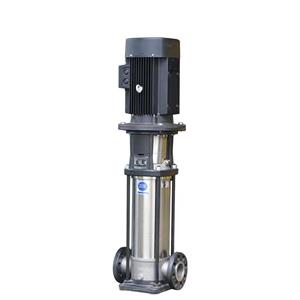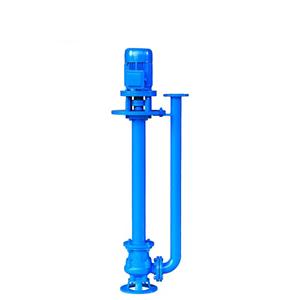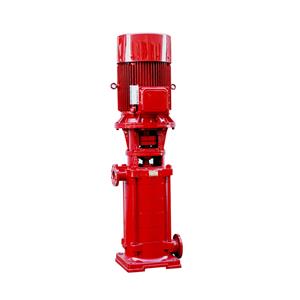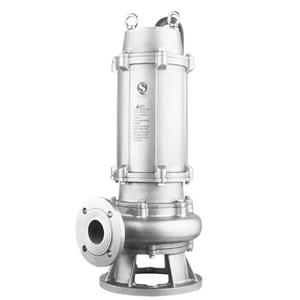As vantagens incomparáveis, instalação e manutenção de bombas magnéticas de aço inoxidável em aplicações industriais
The Incomparable Advantages, Installation and Maintenance of Stainless - Steel Magnetic Pumps in Industrial Applications
In modern industrial processes, the choice of pumping equipment is of utmost importance. Stainless - steel magnetic pumps have emerged as a preferred option in many industries due to their unique and practical advantages.
I. Advantages
1. Exceptional Corrosion Resistance
Stainless steel is renowned for its ability to resist the attack of various corrosive media. In chemical plants, for example, where aggressive chemicals such as strong acids and alkalis are frequently handled, the use of stainless - steel magnetic pumps ensures long - term and reliable operation. Hydrochloric acid, a highly corrosive substance commonly used in chemical reactions and metal cleaning processes, can cause severe damage to pumps made of ordinary materials. However, a stainless - steel magnetic pump can withstand the corrosive effects of hydrochloric acid without significant degradation. This corrosion resistance not only extends the service life of the pump but also reduces maintenance costs. There is no need for frequent replacements of pump components due to corrosion, which leads to less downtime for the production line.
2. Leak - free Operation
Magnetic pumps operate on the principle of magnetic coupling, which eliminates the need for traditional mechanical seals. In industries where the leakage of fluids can have serious consequences, such as the pharmaceutical and food industries, this feature is invaluable. In pharmaceutical manufacturing, even a tiny leak from a pump can contaminate the entire batch of drugs, leading to huge losses in terms of product quality and production costs. Stainless - steel magnetic pumps, with their hermetically sealed design and absence of mechanical seals, completely prevent any leakage. This ensures the integrity of the pumped substances and meets the strict hygiene and safety standards required in these industries.
3. High - efficiency Performance
The smooth inner surface of the stainless - steel casing reduces fluid friction during the pumping process. This results in less energy consumption compared to pumps with rough - surfaced casings. In large - scale industrial applications, such as water treatment plants, where pumps are in continuous operation, the energy - saving effect of stainless - steel magnetic pumps can be substantial. Over time, the reduced energy consumption leads to significant cost savings. Additionally, the magnetic drive system of these pumps allows for a more precise control of the flow rate. By adjusting the magnetic field strength, the rotational speed of the pump can be accurately regulated, enabling the delivery of fluids at the required flow rates for different production processes.
4. Environmental - friendliness
In the field of environmental protection, stainless - steel magnetic pumps play a crucial role. Their leak - free operation helps prevent the leakage of harmful substances into the environment. In wastewater treatment plants, where the pumped wastewater may contain heavy metals and other pollutants, any leakage could cause soil and water pollution. Stainless - steel magnetic pumps ensure that these pollutants are properly contained and treated, contributing to a cleaner and safer environment.
II. Installation
1. Site Selection
Choose a flat and stable installation site. The area should be free from excessive vibrations and large - scale mechanical shocks. Avoid installing the pump in areas with high humidity or direct exposure to sunlight for long periods, as this may accelerate the corrosion of non - stainless - steel components such as electrical parts. In industrial settings, it is advisable to install the pump close to the fluid source and the destination to minimize the length of the pipeline, which can reduce energy loss and pressure drop.
2. Pipeline Connection
Before connecting the pipelines, make sure the inner diameter of the pipelines matches the pump's inlet and outlet sizes. Use appropriate gaskets to ensure a tight seal. For the inlet pipeline, it is important to install a strainer to prevent large - sized impurities from entering the pump, which could damage the internal components. When connecting the outlet pipeline, ensure that there are no sharp bends or blockages that could increase the back - pressure on the pump. The pipeline should be firmly supported to avoid putting excessive stress on the pump's flanges during operation.
3. Electrical Connection
Carefully follow the wiring diagram provided by the manufacturer. Ensure that the electrical supply voltage and frequency match the pump's rated parameters. Use proper electrical conduits to protect the wires from physical damage and environmental factors. Ground the pump properly to prevent electrical accidents. In some cases, additional protection devices such as fuses and overload relays may need to be installed to safeguard the pump and the electrical system.
III. Maintenance
1. Regular Inspection
Conduct regular visual inspections of the pump. Check for any signs of corrosion on the stainless - steel casing, especially in areas where the pump is exposed to corrosive substances. Inspect the pipelines for leaks, loose connections, or signs of wear. Monitor the vibration and noise levels of the pump during operation. An increase in vibration or abnormal noise may indicate problems such as misalignment, bearing wear, or internal component damage.
2. Lubrication
Although magnetic pumps have fewer moving parts compared to traditional pumps, some components such as bearings still require proper lubrication. Use the lubricant recommended by the manufacturer and follow the specified lubrication intervals. Over - lubrication or using the wrong type of lubricant can also cause problems, so it is important to be precise.
3. Cleaning
Regularly clean the pump and its associated components. Remove any accumulated debris, dirt, or residues on the pump's surface. For the strainer installed in the inlet pipeline, clean it frequently to ensure its filtering efficiency. In some applications where the pumped fluid may cause deposits inside the pump, a periodic internal cleaning may be necessary. This can be done by using appropriate cleaning agents that are compatible with the stainless - steel material.
4. Component Replacement
Over time, some components of the pump may wear out. Keep a stock of essential spare parts such as bearings, gaskets, and impellers. When a component shows signs of significant wear or damage, replace it promptly. Follow the manufacturer's instructions for component replacement to ensure proper installation and performance.
In conclusion, understanding the advantages, installation, and maintenance of stainless - steel magnetic pumps is essential for their efficient and long - term operation in various industrial applications. As industries continue to develop, these pumps will play an increasingly important role in ensuring smooth production processes, high - quality products, and environmental protection.




